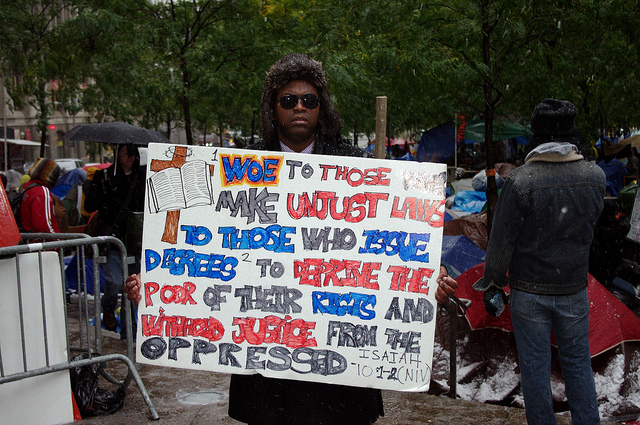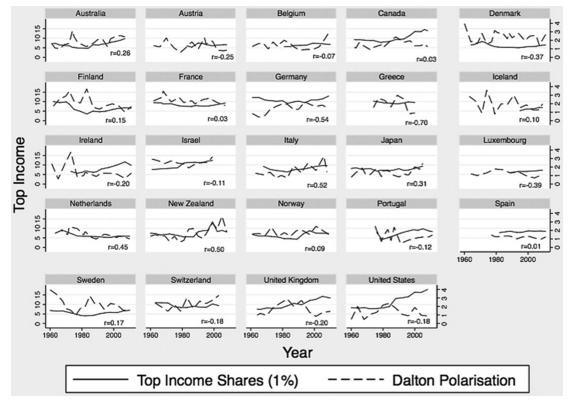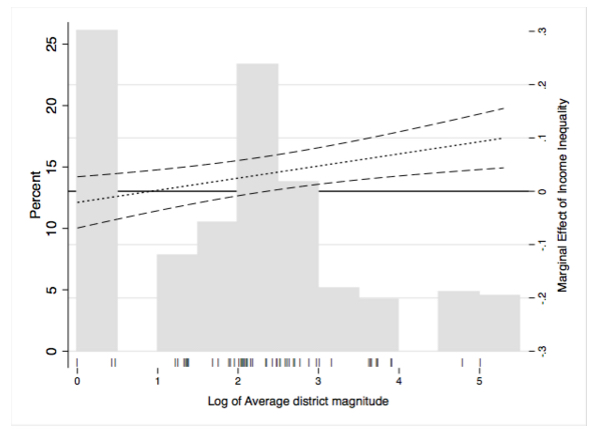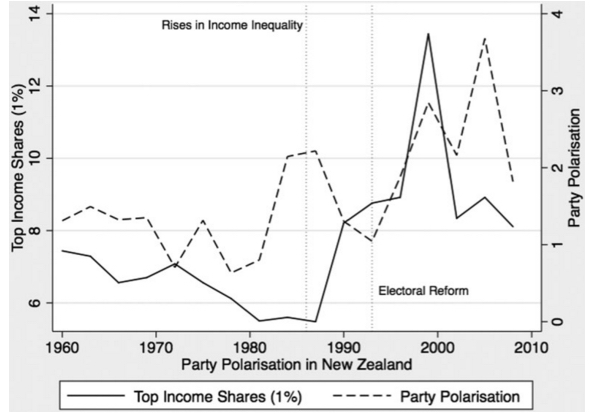Income inequality and party polarisation proceed together in some countries, but not in others
Income and wealth inequality have become increasingly important drivers of political activity over recent years, following the 2008 financial crisis. But what impact does economic polarisation have on political polarisation? Han Sung Min argues that in some cases income inequality and party polarisation proceed together, but not in others – with electoral systems providing a key explainer as to why.

Credit: David Shankbone, CC BY 2.0
Party polarisation has emerged an important topic in the popular press and academic circles in the United States. Indeed, mounds of evidence suggest that ideological divergences of politicians and political parties are critically linked to rising income inequality (see here for more information). While party polarisation has received considerable scholarly attention in the United States, it remains unclear if explanations for party polarisation there can be applied to other countries.
Interestingly, party polarisation in many countries does not track with a widening wealth gap. While in some countries income inequality and party polarisation move together (Italy, Japan, the Netherlands and New Zealand), this trend does not exist in other countries (Austria, Canada and the United Kingdom) (see Figure 1). Why do income inequality and party polarisation proceed together in some countries but not in others?
Figure 1. Economic inequality and party polarisation
Why income inequality?
Income inequality is the main stimulus that generates diverging incentives for political parties. Rises in inequality incite voters, especially the core supporters of left and right parties, to care more about policy issues. Core supporters’ redistributive preferences become stronger because the scope of redistribution would be larger under greater inequality. This means that economic interests dominate core supporters’ political decisions, which makes it easier for political parties to target them by proposing extreme positions, as the conflict among the left- and rightwing parties’ core supporters becomes more salient. Simply put, the Labour Party has more incentive to proponent the interest of the labor class, the Conservative Party are willing to serve the interest of the capitalist with rising inequality.
Electoral systems matter
Yet parties’ ability to respond to economic shocks varies depending on the permissiveness of their electoral systems. In particular, parties are more likely to respond to economic shocks with extreme policy positions, which lead to party polarisation, when electoral systems permit the entrance of a greater number of parties. Under restrictive electoral systems, which constrain the entrance of many small parties in the electoral arena, even political parties with diverging platform incentives have difficulty changing their positions to more extreme locations. This is simply because taking an extreme position does not help political parties gain more seats on many occasions. Rather, it increases the likelihood of losing seats if other parties maintain their positions.
Under permissive electoral systems, such as proportional representation systems, a number of parties compete for numerous assigned seats, political parties gain more seats as long as they secure votes from core supporters by responding to exogenous shocks. Therefore, parties pay less attention whether platform changes will lead to loss of support from voters at the centre. This is why parties with a various ideological tags can easily survive in Belgium and the Netherlands. Under restrictive systems (i.e., single-member districts like in the U.K.), on the other hand, parties give more weight to how position changes impact on support from centre voters. In restrictive systems, parties compete for one or two seats at each electoral district. This naturally prevents extreme moves because parties need to consider how position changes generate more votes and how they destroy support from centre voters.
Vote gains from position changes also depend on the other parties’ positions. If parties are uncertain how other parties change positions with rises in inequality, it is difficult for them to change their positions towards the extreme because this might lead to the loss of support from centre voters. Therefore, parties’ position changes are more constrained under restrictive electoral systems. For instance, the British Labour Party’s effort to secure votes from the centre generates policy moderation even in a period of increasing inequality. Tony Blair would not propose the ‘The Third Way’ if he believes that moderation of the Labour’s platform would not create the supports from the centre voters. If U.K. used a different electoral system that allows increasing number of competing parties, his electoral strategy would be changed.
My study shows that the relationship between income inequality and party polarisation is much stronger in PR systems than in SMD systems (Figure 2).When electoral systems are not permissive (where average district magnitude is smaller than 10), party polarisation does not increase as the level of income inequality rises. Only in electoral systems that are permissive enough to allow competing a number parties in electoral arena, does party polarisation and income inequality increase simultaneously.
Figure 2. Effect of economic inequality in different electoral systems
How electoral system reforms affect symbiosis between polarisation and inequality?
The pattern of party polarisation in New Zealand also reveals how countries with different electoral systems use polarising external pressures, such as rises in income inequality. New Zealand adopted a major electoral reform moving from a purely majoritarian SMD system to a more permissive mixed-member proportional system in 1993. Under the SMD system before the reform New Zealand had experienced frequent changes in governments and electoral volatility was significantly high. As more voters changed their choices from election to election, it was hard for the two major parties (i.e., National and Labour) to have distinctive policy platforms in response to exogenous pressures. After the reform, however, political parties in New Zealand gained more freedom to take extreme positions because moderate positions do not necessarily help parties gain more seats under permissive systems. Notably, both major parties in New Zealand have shown more distinctive positions after the reform. Income inequality began to rise in 1980s. However, the positive relationship between party polarisation and income inequality became much stronger after the reform (Figure 3).
Figure 3. Changes in Party polarisation in New Zealand.
This study provides additional insights to studies on politics in European countries. As it points out, rises in inequality increase the demand for more divergent political spaces in permissive systems. Therefore, rises in inequality provide good opportunities for extreme parties under permissive systems. In particular, extreme parties might become more viable if mainstream parties have failed to serve divergent positions under permissive systems. Current political ground in European countries shows that it is not an unlikely prediction. The strong performance of the Left Party in Germany and the increasing popularity of right populist parties in the Netherlands can be partially attributed to combinations of bad economic conditions and limitations in existing mainstream left and right parties.
—
Note: this piece represents the views of the author and not those of Democratic Audit or the LSE. Please read our comments policy before posting.
—
 Han Sung Min is a PhD student at Michigan State University. His academic profile picture can be found here.
Han Sung Min is a PhD student at Michigan State University. His academic profile picture can be found here.








 Democratic Audit's core funding is provided by the Joseph Rowntree Charitable Trust. Additional funding is provided by the London School of Economics.
Democratic Audit's core funding is provided by the Joseph Rowntree Charitable Trust. Additional funding is provided by the London School of Economics.
Income inequality & party polarisation proceed together only in some cases – electoral systems provide key explainer https://t.co/jxkiphtZi0
Income inequality and party polarisation proceed together in some countries, but not in others : Democratic Audit UK https://t.co/0VxvCc1VKA
Income inequality and party polarisation proceed together in some countries, but not in others https://t.co/o7EYUW1DbO
Income inequality and party polarisation proceed together in some countries, but not in others, writes Han Sung Min https://t.co/a16XEGzy6A
RT @LSEPubAffairs: Income inequality and party polarisation proceed together in some countries, but not in others https://t.co/KAtM6YF2P3
Income inequality and party polarisation proceed together in some countries, but not in others https://t.co/hMwTop9y9U
Income inequality and party polarisation proceed together in some countries, but not… https://t.co/uB4TPrPZJ9 https://t.co/p5ULt7dxqM